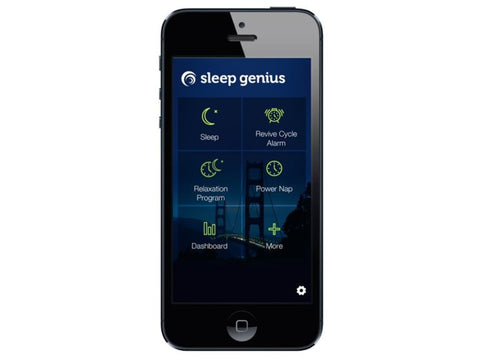When you make an appointment with your eye doctor, you can count on discussing topics like reading small print in dim light and how sunglasses protect your eyes from UV rays. The subject of blue light? Probably doesn't come up much, if at all. But in reality, we’ve become a digital-driven society that spends ever-increasing amounts of time staring at phones, tablets, computer screens, and oversized TVs. Since digital technology emits a significant source of blue light, it’s definitely a conversation worth having.
Though blue light can be found everywhere from sunlight to LED and fluorescent lighting, the increased use of digital devices is tipping the scales in terms of exposure and long-term effects on your health. Natural blue light is a good thing, necessary for a cloudless sky to appear deep blue and for healthy eye development in kids. But too much may be putting your vision and overall health at risk. Here are seven things you should know about excessive blue light exposure:
1. Sleepless Nights
A good night’s sleep is one of the foundations for healthy living, keeping heart disease, type 2 diabetes, obesity, and depression at bay. Therefore, a recent study linking blue light to sleep dysfunction has more serious implications than just tossing and turning all night. Using blue light-emitting devices close to bedtime disrupts your circadian rhythm, your body’s 24-hour clock. That natural rhythm of energy highs and lows, dictated by physiological factors and your response to day and night, is what makes one person an early bird and another person a night owl. When blue light exposure fools you into wakefulness, sleep-inducing melatonin levels in your body drop, taking away your ability to achieve a deep and restful slumber. The result is wide-eyed energy during the night when (seemingly at least) the world around you is snoozing.
2. Morning Sluggishness

All that interrupted sleep builds up over time, making it harder and harder to get up in the morning. One study shows that reduced melatonin levels lead to higher than normal nighttime body temperatures and the tendency to wake multiple times throughout the night. These disturbances to your biological clock are particularly challenging if you have to get up early for school or are required to hit the ground running first thing in the morning at the office.
3. Changes in Mood
When your daytime and nighttime routines are disrupted, your mental health is at risk. Photoreceptors in the brain, no longer in sync with the sun, miscue the emotion center in the temporal lobe (known as the amygdala), potentially leading to increased anxiety and depression. In fact, people who endure dramatic circadian disruption, like shift workers and international flight attendants, are known to experience mood disorders.
4. Macular Degeneration
Almost all visible blue light passes through the front of your eye at the cornea and lens to reach the retina at the back of the eye. This sensory membrane contains photoreceptors that send information to the brain, where it’s converted into images. Studies indicate that continued exposure to blue light over time damages retinal cells and may increase your risk of developing macular degeneration as you get older.
5. Digital Eye Strain and Dry Eyes

If you’ve ever experienced dryness, blurry vision, and eye fatigue after a long session at the computer, you’ve suffered from digital eye strain. While you typically blink 15 times a minute under most conditions, that number falls to only five to seven times per minute when you’re staring at an electronic screen.
6. Risk Factors Following Cataract Surgery
A healthy lens at the front of your eye blocks close to 100 percent of the sun’s UV rays. As you age, it yellows thereby blocking some, but not all, blue light. Some research suggests that blue light also contributes to age-related deterioration of your vision, including the formation of cataracts. After cataract surgery, many patients are being treated with intraocular lenses that filter both UV and blue light filters to protect the retina from future damage.
7. Blue Light Filtering Eyewear
If you have to be in front of a computer for long stretches, filter out damaging blue light with SafetyBlue™ day blocking glasses so you can keep gaming, posting, reading and living digitally without destroying your sight or quality of life.
In the evening, if you like to unwind watching your4 favorite shows before bed—there are things you can do to protect your eyes as well. Wear red night glasses when you’re viewing digital screens. Sleep Savior® lenses filter not only blue light but green light, which has also been linked to disruptions in circadian rhythm and melatonin production.
Day or night blockers aside, minimize eye fatigue by following the 20-20-20 rule: every 20 minutes, shift your eyes to an object at least 20 feet away for at least 20 seconds. Set your iPhone to Night Shift, which alters phone display colors to the warmer end of the color spectrum. Consider swaping out screen time for a good book before bed, and choose reduced-blue LED lighting for your bedroom. Weaning yourself off of bad habits isn’t easy, but the benefits of getting more sleep and improving how you feel during the day will quickly convince you that it’s worth the effort.
Written by Ann Gibson for Matcha in partnership with SafetyBlue™.




